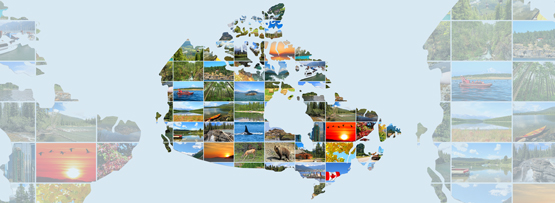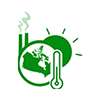Why are we conducting this survey?
This survey is conducted by Statistics Canada in order to collect the necessary information to support the Integrated Business Statistics Program (IBSP). This program combines various survey and administrative data to develop comprehensive measures of the Canadian economy.
The statistical information from the IBSP serves many purposes, including:
- calculating each province and territory's fair share of federal-provincial transfer payments for health, education and social programs
- establishing government programs to assist businesses
- assisting the business community in negotiating contracts and collective agreements
- supporting the government in making informed decisions about fiscal, monetary and foreign exchange policies
- indexing social benefit programs and determining tax brackets
- enabling academics and economists to analyze the economic performance of Canadian industries and to better understand rapidly evolving business environments.
Your information may also be used by Statistics Canada for other statistical and research purposes.
Your participation in this survey is required under the authority of the Statistics Act.
Other important information
Authorization to collect this information
Data are collected under the authority of the Statistics Act, Revised Statutes of Canada, 1985, Chapter S-19.
Confidentiality
By law, Statistics Canada is prohibited from releasing any information it collects that could identify any person, business, or organization, unless consent has been given by the respondent, or as permitted by the Statistics Act. Statistics Canada will use the information from this survey for statistical purposes only.
Record linkages
To enhance the data from this survey and to reduce the reporting burden, Statistics Canada may combine the acquired data with information from other surveys or from administrative sources.
Data-sharing agreements
To reduce respondent burden, Statistics Canada has entered into data-sharing agreements with provincial and territorial statistical agencies and other government organizations, which have agreed to keep the data confidential and use them only for statistical purposes. Statistics Canada will only share data from this survey with those organizations that have demonstrated a requirement to use the data.
Section 11 of the Statistics Act provides for the sharing of information with provincial and territorial statistical agencies that meet certain conditions. These agencies must have the legislative authority to collect the same information, on a mandatory basis, and the legislation must provide substantially the same provisions for confidentiality and penalties for disclosure of confidential information as the Statistics Act. Because these agencies have the legal authority to compel businesses to provide the same information, consent is not requested and businesses may not object to the sharing of the data.
For this survey, there are Section 11 agreements with the provincial and territorial statistical agencies of Newfoundland and Labrador, Nova Scotia, New Brunswick, Québec, Ontario, Manitoba, Saskatchewan, Alberta, British Columbia and the Yukon. The shared data will be limited to information pertaining to business establishments located within the jurisdiction of the respective province or territory.
Section 12 of the Statistics Act provides for the sharing of information with federal, provincial or territorial government organizations. Under Section 12, you may refuse to share your information with any of these organizations by writing a letter of objection to the Chief Statistician, specifying the organizations with which you do not want Statistics Canada to share your data and mailing it to the following address:
Chief Statistician of Canada
Statistics Canada
Attention of Director, Enterprise Statistics Division
150 Tunney's Pasture Driveway
Ottawa, Ontario
K1A 0T6
You may also contact us by email at statcan.esdhelpdesk-dsebureaudedepannage.statcan@statcan.gc.ca or by fax at 613-951-6583.
For this survey, there are Section 12 agreements with the statistical agencies of Prince Edward Island, the Northwest Territories and Nunavut and with Natural Resources Canada.
For agreements with provincial and territorial government organizations, the shared data will be limited to information pertaining to business establishments located within the jurisdiction of the respective province or territory.
Additional information
In cases where information is reported on an amalgamated basis and relates to operations in more than one province or territory, Statistics Canada may allocate a portion of the reported information to these provincial or territorial operations. The allocated information will be shared in accordance with the Section 11 or 12 agreements of the Statistics Act, as described above.
In cases where there is a separate head office, Statistics Canada may adjust the reported revenues of that head office so that those revenues more fully reflect the value of the services the head office provides. In such cases, there will be a corresponding adjustment to the reported expenses of the units served. The adjusted information will be shared in accordance with the Section 11 or 12 agreements of the Statistics Act, as described above.
Business or organization and contact information
1. Verify or provide the business or organization's legal and operating name and correct where needed.
Note: Legal name modifications should only be done to correct a spelling error or typo.
Legal Name
The legal name is one recognized by law, thus it is the name liable for pursuit or for debts incurred by the business or organization. In the case of a corporation, it is the legal name as fixed by its charter or the statute by which the corporation was created.
Modifications to the legal name should only be done to correct a spelling error or typo.
To indicate a legal name of another legal entity you should instead indicate it in question 3 by selecting 'Not currently operational' and then choosing the applicable reason and providing the legal name of this other entity along with any other requested information.
Operating Name
The operating name is a name the business or organization is commonly known as if different from its legal name. The operating name is synonymous with trade name.
- Legal name
- Operating name (if applicable)
2. Verify or provide the contact information of the designated business or organization contact person for this questionnaire and correct where needed.
Note: The designated contact person is the person who should receive this questionnaire. The designated contact person may not always be the one who actually completes the questionnaire.
- First name
- Last name
- Title
- Preferred language of communication
- English
- French
- Mailing address (number and street)
- City
- Province, territory or state
- Postal code or ZIP code
- Country
- Canada
- United States
- Email address
- Telephone number (including area code)
- Extension number (if applicable)
The maximum number of characters is 10. - Fax number (including area code)
3. Verify or provide the current operational status of the business or organization identified by the legal and operating name above.
- Operational
- Not currently operational
Why is this business or organization not currently operational?- Seasonal operations
- When did this business or organization close for the season?
- Date
- When does this business or organization expect to resume operations?
- Date
- When did this business or organization close for the season?
- Ceased operations
- When did this business or organization cease operations?
- Date
- Why did this business or organization cease operations?
- Bankruptcy
- Liquidation
- Dissolution
- Other - Specify the other reasons why the operations ceased
- When did this business or organization cease operations?
- Sold operations
- When was this business or organization sold?
- Date
- What is the legal name of the buyer?
- When was this business or organization sold?
- Amalgamated with other businesses or organizations
- When did this business or organization amalgamate?
- Date
- What is the legal name of the resulting or continuing business or organization?
- What are the legal names of the other amalgamated businesses or organizations?
- Temporarily inactive but will re-open
- When did this business or organization become temporarily inactive?
- Date
- When does this business or organization expect to resume operations?
- Date
- Why is this business or organization temporarily inactive?
- When did this business or organization become temporarily inactive?
- No longer operating due to other reasons
- When did this business or organization cease operations?
- Date
- Why did this business or organization cease operations?
- When did this business or organization cease operations?
- Seasonal operations
4. This business unit has been identified as a Head Office. For the purposes of this survey, a Head Office provides support services such as accounting, payroll, management and legal to other entities within the same enterprise.
Which of the following statements most accurately describes this business unit?
This question verifies the business or organization's current main activity as classified by the North American Industry Classification System (NAICS). The North American Industry Classification System (NAICS) is an industry classification system developed by the statistical agencies of Canada, Mexico and the United States. Created against the background of the North American Free Trade Agreement, it is designed to provide common definitions of the industrial structure of the three countries and a common statistical framework to facilitate the analysis of the three economies. NAICS is based on supply-side or production-oriented principles, to ensure that industrial data, classified to NAICS, are suitable for the analysis of production-related issues such as industrial performance.
The target entity for which NAICS is designed are businesses and other organizations engaged in the production of goods and services. They include farms, incorporated and unincorporated businesses and government business enterprises. They also include government institutions and agencies engaged in the production of marketed and non-marketed services, as well as organizations such as professional associations and unions and charitable or non-profit organizations and the employees of households.
The associated NAICS should reflect those activities conducted by the business or organizational units targeted by this questionnaire only, as identified in the 'Answering this questionnaire' section and which can be identified by the specified legal and operating name. The main activity is the activity which most defines the targeted business or organization's main purpose or reason for existence. For a business or organization that is for-profit, it is normally the activity that generates the majority of the revenue for the entity.
The NAICS classification contains a limited number of activity classifications; the associated classification might be applicable for this business or organization even if it is not exactly how you would describe this business or organization's main activity.
Please note that any modifications to the main activity through your response to this question might not necessarily be reflected prior to the transmitting of subsequent questionnaires and as a result they may not contain this updated information.
The following is the detailed description including any applicable examples or exclusions for the classification currently associated with this business or organization.
This Canadian industry comprises establishments primarily engaged in providing general management and/or administrative support services to affiliated establishments. Head offices are engaged in directing or managing the enterprise as a whole.
- This business unit is a Head Office
- This business unit is not a Head Office
Please describe in detail the main activities performed by this business unit
Main activity
5. You indicated that is not the current main activity.
Was this business or organization's main activity ever classified as: ?
- Yes
- No
When did the main activity change?
- Date
6. Search and select the industry classification code that best corresponds to this business or organization's main activity.
Select this business or organization's activity sector (optional)
- Farming or logging operation
- Construction company or general contractor
- Manufacturer
- Wholesaler
- Retailer
- Provider of passenger or freight transportation
- Provider of investment, savings or insurance products
- Real estate agency, real estate brokerage or leasing company
- Provider of professional, scientific or technical services
- Provider of health care or social services
- Restaurant, bar, hotel, motel or other lodging establishment
- Other sector
7. You have indicated that the current main activity of this business or organization is:
Main activity
Are there any other activities that contribute significantly (at least 10%) to this business or organization's revenue?
- Yes, there are other activities
- No, that is the only significant activity
Provide a brief but precise description of this business or organization's secondary activity
e.g., breakfast cereal manufacturing, shoe store, software development
8. Approximately what percentage of this business or organization's revenue is generated by each of the following activities?
When precise figures are not available, provide your best estimates.
| Percentage of revenue | |
|---|---|
| Main activity | |
| Secondary activity | |
| All other activities | |
| Total percentage |
Reporting period information
1. What are the start and end dates of this business's or organization's most recently completed fiscal year?
For this survey, the end date should fall between April 1, 2022 and March 31, 2023.
Here are twelve common fiscal periods that fall within the targeted dates:
- May 1, 2021 to April 30, 2022
- June 1, 2021 to May 31, 2022
- July 1, 2021 to June 30, 2022
- August 1, 2021 to July 31, 2022
- September 1, 2021 to August 31, 2022
- October 1, 2021 to September 30, 2022
- November 1, 2021 to October 31, 2022
- December 1, 2021 to November 30, 2022
- January 1, 2022 to December 31, 2022
- February 1, 2022 to January 31, 2023
- March 1, 2022 to February 28, 2023
- April 1, 2022 to March 31, 2023.
Here are other examples of fiscal periods that fall within the required dates:
- September 18, 2021 to September 15, 2022 (e.g., floating year-end)
- June 1, 2022 to December 31, 2022 (e.g., a newly opened business).
- Fiscal year start date
- Fiscal year-end date
2. What is the reason the reporting period does not cover a full year?
Select all that apply.
- Seasonal operations
- New business
- Change of ownership
- Temporarily inactive
- Change of fiscal year
- Ceased operations
- Other
Specify reason the reporting period does not cover a full year
Additional reporting instructions
1. Throughout this questionnaire, please report financial information in thousands of Canadian dollars.
For example, an amount of $763,880.25 should be reported as:
CAN$ '000: $764,000
I will report in the format above
Revenue
1. For the reporting period of YYYY-MM-DD to YYYY-MM-DD, what was this business's revenue from each of the following sources?
Notes:
- a detailed breakdown may be requested in other sections
- these questions are asked of many different industries. Some questions may not apply to this business
Report dollar amounts in thousands of Canadian dollars.
- Sales of goods and services (e.g., fees, commissions, services revenue)
- Report net of returns and allowances.
- Sales of goods and services are defined as amounts derived from the sale of goods and services (cash or credit), falling within a business's ordinary activities. Sales should be reported net of trade discount, value added tax and other taxes based on sales.
- Include:
- sales from Canadian locations (domestic and export sales)
- transfers to other business units or a head office of your firm.
- Exclude:
- transfers into inventory and consignment sales
- federal, provincial and territorial sales taxes and excise duties and taxes
- intercompany sales in consolidated financial statements.
- Rental and leasing
- Include rental or leasing of apartments, commercial buildings, land, office space, residential housing, investments in co-tenancies and co-ownerships, hotel or motel rooms, long and short term vehicle leasing, machinery or equipment, storage lockers, etc.
- Commissions
- Include commissions earned on the sale of products or services by businesses such as advertising agencies, brokers, insurance agents, lottery ticket sales, sales representatives and travel agencies - compensation could also be reported under this item (for example, compensation for collecting sales tax).
- Subsidies (including grants, donations, fundraising and sponsorships)
- Include:
- non-repayable grants, contributions and subsidies from all levels of government
- revenue from private sector (corporate and individual) sponsorships, donations and fundraising.
- Include:
- Royalties, rights, licensing and franchise fees
- A royalty is defined as a payment received by the holder of a copyright, trademark or patent.
- Include revenue received from the sale or use of all intellectual property rights of copyrighted materials such as musical, literary, artistic or dramatic works, sound recordings or the broadcasting of communication signals.
- Dividends
- Include:
- dividend income
- dividends from Canadian sources
- dividends from foreign sources
- patronage dividends.
- Exclude equity income from investments in subsidiaries or affiliates.
- Include:
- Interest
- Include:
- investment revenue
- interest from foreign sources
- interest from Canadian bonds and debentures
- interest from Canadian mortgage loans
- interest from other Canadian sources.
- Exclude equity income from investments in subsidiaries or affiliates.
- Include:
- All other revenue (Include intracompany transfers)
- Include amounts not included in questions a. to g.
- The sum of sub-questions a. to h.
| CAN$ '000 | |
|---|---|
| Sales of goods and services | |
| Rental and leasing | |
| Commissions | |
| Subsidies | |
| Royalties, rights, licensing and franchise fees | |
| Dividends | |
| Interest | |
| Other | |
| Total revenue |
Expenses
1. For the reporting period of YYYY-MM-DD to YYYY-MM-DD, what were this business's expenses for the following items?
Notes:
- a detailed breakdown may be requested in other sections
- these questions are asked of many different industries. Some questions may not apply to this business
Report dollar amounts in thousands of Canadian dollars.
- Cost of goods sold
- Many business units distinguish their costs of materials from their other business expenses (selling, general and administrative). This item is included to allow you to easily record your costs/expenses according to your normal accounting practices.
- Include:
- cost of raw materials and/or goods purchased for resale - net of discounts earned on purchases
- freight in and duty.
- Exclude all costs associated with salaries, wages, benefits, commissions and subcontracts (report at Employment costs and expenses, and Subcontracts).
- Employment costs and expenses
- b1. Salaries, wages and commissions
Please report all salaries and wages (including taxable allowances and employment commissions as defined on the T4 - Statement of Remuneration Paid) before deductions for this reporting period. - Include:
- vacation pay
- bonuses (including profit sharing)
- employee commissions
- taxable allowances (e.g., room and board, vehicle allowances, gifts such as airline tickets for holidays)
- severance pay.
- Exclude all payments and expenses associated with casual labour and outside contract workers (report at Subcontracts).
- b2. Employee benefits
- Include contributions to:
- health plans
- insurance plans
- employment insurance
- pension plans
- workers' compensation
- association dues
- contributions to any other employee benefits such as child care and supplementary unemployment benefit (SUB) plans
- contributions to provincial and territorial health and education payroll taxes.
- b1. Salaries, wages and commissions
- Subcontracts
- Subcontract expense refers to the purchasing of services from outside of the company rather than providing them in-house.
- Include:
- hired casual labour and outside contract workers
- custom work and contract work
- subcontract and outside labour
- hired labour.
- Research and development fees
- Expenses from activities conducted with the intention of making a discovery that could either lead to the development of new products or procedures, or to the improvement of existing products or procedures.
- Professional and business fees
- Include:
- legal services
- accounting and auditing fees
- consulting fees
- education and training fees
- appraisal fees
- management and administration fees
- property management fees
- information technology (IT) consulting and service fees (purchased)
- architectural fees
- engineering fees
- scientific and technical service fees
- other consulting fees (management, technical and scientific)
- veterinary fees
- fees for human health services
- payroll preparation fees
- all other professional and business service fees.
- Exclude service fees paid to Head Office (report at All other costs and expenses).
- Include:
- Utilities
- Utility expenses related to operating your business unit such as water, electricity, gas, heating and hydro.
- Include:
- diesel, fuel wood, natural gas, oil and propane
- sewage.
- Exclude:
- energy expenses covered in your rental and leasing contracts
- telephone, Internet and other telecommunications
- vehicle fuel (report at All other costs and expenses).
- Office and computer related expenses
- Include:
- office stationery and supplies, paper and other supplies for photocopiers, printers and fax machines
- postage and courier (used in the day to day office business activity)
- computer and peripherals upgrade expenses
- data processing.
- Exclude telephone, Internet and other telecommunication expenses (report at Telephone, Internet and other telecommunication).
- Include:
- Telephone, Internet and other telecommunication
- Include:
- internet
- telephone and telecommunications
- cellular telephone
- fax machine
- pager.
- Include:
- Business taxes, licenses and permits
- Include:
- property taxes paid directly and property transfer taxes
- vehicle license fees
- beverage taxes and business taxes
- trade license fees
- membership fees and professional license fees
- provincial capital tax.
- Include:
- Royalties, franchise fees and memberships
- Include:
- amounts paid to holders of patents, copyrights, performing rights and trademarks
- gross overriding royalty expenses and direct royalty costs
- resident and non-resident royalty expenses
- franchise fees.
- Exclude Crown royalties
- Include:
- Crown charges
- Federal or Provincial royalty, tax, lease or rental payments made in relation to the acquisition, development or ownership of Canadian resource properties.
- Include:
- Crown royalties
- Crown leases and rentals
- oil sand leases
- stumpage fees.
- Rental and leasing
- Include:
- lease rental expenses, real estate rental expenses, condominium fees and equipment rental expenses
- motor vehicle rental and leasing expenses
- studio lighting and scaffolding
- machinery and equipment rental expenses
- storage expenses
- road and construction equipment rental
- fuel and other utility costs covered in your rental and leasing contracts.
- Include:
- Repair and maintenance
- Include:
- buildings and structures
- machinery and equipment
- security equipment
- vehicles
- costs related to materials, parts and external labour associated with these expenses
- janitorial and cleaning services and garbage removal.
- Include:
- Amortization and depreciation
- Include:
- direct cost depreciation of tangible assets and amortization of leasehold improvements
- amortization of intangible assets (e.g., amortization of goodwill, patents, franchises, copyrights, trademarks, deferred charges, organizational costs).
- Include:
- Insurance
- Insurance recovery income should be deducted from insurance expenses.
- Include:
- professional and other liability insurance
- motor vehicle and property insurance
- executive life insurance
- bonding, business interruption insurance and fire insurance.
- Advertising, marketing, promotion, meals and entertainment
- Include:
- newspaper advertising and media expenses
- catalogues, presentations and displays
- tickets for theatre, concerts and sporting events for business promotion
- fundraising expenses
- meals, entertainment and hospitality purchases for clients.
- Include:
- Travel, meetings and conventions
- Include:
- travel expenses
- meeting and convention expenses, seminars
- passenger transportation (e.g., airfare, bus, train)
- accommodations
- travel allowance and meals while travelling
- other travel expenses.
- Include:
- Financial services
- Include:
- explicit service charges for financial services
- credit and debit card commissions and charges
- collection expenses and transfer fees
- registrar and transfer agent fees
- security and exchange commission fees
- other financial service fees.
- Exclude interest expenses (report at Interest expense).
- Include:
- Interest expense
- Report the cost of servicing your company's debt.
- Include:
- interest
- bank charges
- finance charges
- interest payments on capital leases
- amortization of bond discounts
- interest on short-term and long-term debt, mortgages, bonds and debentures.
- Other non-production-related costs and expenses
- Include:
- charitable donations and political contributions
- bad debt expense
- loan losses
- provisions for loan losses (minus bad debt recoveries)
- inventory adjustments.
- Include:
- All other costs and expenses (including intracompany expenses)
- Include:
- production costs
- pipeline operations, drilling, site restoration
- gross overriding royalty
- other producing property rentals
- well operating, fuel and equipment
- other lease rentals
- other direct costs
- equipment hire and operation
- log yard expense, forestry costs, logging road costs
- freight in and duty
- overhead expenses allocated to cost of sales
- other expenses
- cash over/short (negative expense)
- reimbursement of parent company expense
- warranty expense
- recruiting expenses
- general and administrative expenses
- interdivisional expenses
- interfund transfer (minus expense recoveries)
- exploration and development (including prospect/geological, well abandonment and dry holes, exploration expenses, development expenses)
- amounts not included in sub-questions a. to t. above.
- The sum of sub-questions a. to u.
- Include:
| CAN$ '000 | |
|---|---|
| Cost of goods sold | |
| Opening inventories | |
| Purchases | |
| Closing inventories | |
| Cost of goods sold | |
| Employment costs and expenses | |
| Salaries, wages and commissions | |
| Employee benefits | |
| Subcontracts | |
| Research and development fees | |
| Professional and business fees | |
| Utilities | |
| Office and computer related expenses | |
| Telephone, Internet and other telecommunication | |
| Business taxes, licenses and permits | |
| Royalties, franchise fees and memberships | |
| Crown charges | |
| Rental and leasing | |
| Repair and maintenance | |
| Amortization and depreciation | |
| Insurance | |
| Advertising, marketing, promotion, meals and entertainment | |
| Travel, meetings and conventions | |
| Financial services | |
| Interest expense | |
| Other non-production-related costs and expenses | |
| All other costs and expenses | |
| Total expenses |
Industry characteristics
1. What percentage of the revenue, at this head office only, is generated from:
Revenue is divided into two main categories: revenue from transactions with external clients and revenue from transactions with internal clients. Please report accordingly.
| Percentage | |
|---|---|
| External clients | |
| Internal clients |
2. For the reporting period of YYYY-MM-DD to YYYY-MM-DD, what is the average number of people employed at this head office only?
Include full-time, part-time and temporary employees and employees absent with pay.
Exclude contract and subcontract workers who are not part of your payroll.
Employment at this head office
To calculate the average number of people employed, add the number of people employed in the last pay period of each month and divide this sum by the number of months in the reporting period (usually 12).
Exclude:
- contract and subcontract workers who are not part of your payroll
- company pensioners
- persons working on a full commission basis for whom you are not making Canada Pension Fund (CPP) or Quebec Pension Fund (le Régime des rentes du Québec) or employment insurance (EI) contributions
- outside directors of incorporated companies.
Number
Notification of intent to extract web data
1. Does this business have a website?
- Yes
- Specify the business website address 1
- Specify the business website address 2
- Specify the business website address 3
- No
Notification of intent to extract web data
Statistics Canada engages in web-data extraction, also known as web scraping, which is a process by which information is gathered and copied from the Web using automated scripts or robots, for retrieval and analysis. As a result, we may visit the website for this business or organization to search for and compile additional information. The use of web scraping is part of a broader effort to reduce the response burden on businesses or organizations, as well as produce additional statistical indicators to ensure that our data remain accurate and relevant.
We will strive to ensure that the data collection does not interfere with the functionality of the website. Any data collected will be used by Statistics Canada for statistical and research purposes only, in accordance with the agency's privacy and confidentiality mandate. All information collected by Statistics Canada is strictly protected.
More information regarding Statistics Canada's web scraping initiative.
Learn more about Statistics Canada's transparency and accountability.
If you have any questions or concerns, please contact Statistics Canada Client Services, toll-free at 1-877-949-9492 (TTY: 1-800-363-7629) or by email at infostats@statcan.gc.ca- this link will open in a new window. Additional information about this survey can be found by selecting the following link: Information for survey participants (ISP).
Changes or events
1. Indicate any changes or events that affected the reported values for this business or organization, compared with the last reporting period.
Select all that apply.
- Strike or lock-out
- Exchange rate impact
- Price changes in goods or services sold
- Contracting out
- Organizational change
- Price changes in labour or raw materials
- Natural disaster
- Recession
- Change in product line
- Sold business or business units
- Expansion
- New or lost contract
- Plant closures
- Acquisition of business or business units
- Other
Specify the other changes or events: - No changes or events
Contact person
2. Statistics Canada may need to contact the person who completed this questionnaire for further information.
Is the provided given names and the provided family name the best person to contact?
- Yes
- No
Who is the best person to contact about this questionnaire?
- First name:
- Last name:
- Title:
- Email address:
- Telephone number (including area code):
- Extension number (if applicable):
The maximum number of characters is 5. - Fax number (including area code):
Feedback
3. How long did it take to complete this questionnaire?
Include the time spent gathering the necessary information.
- Hours:
- Minutes:
4. Do you have any comments about this questionnaire?

 About
About Topics
Topics Data
Data Reference
Reference











 Agriculture and food
Agriculture and food Climate change
Climate change Energy
Energy Environment
Environment Health
Health Indigenous peoples
Indigenous peoples Infrastructure
Infrastructure Population and demography
Population and demography Poverty
Poverty Quality of life
Quality of life Rural
Rural Transportation
Transportation




